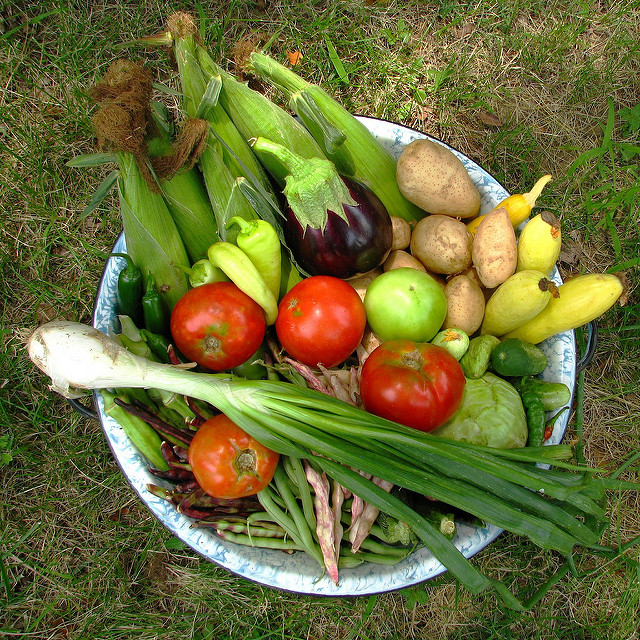There are 4 major things that you need to consider in order to build your root cellar.
- Ventilation
- Earth-shelter (Either in the basement of your home or buried outside)
- Darkness
- Humidity
Root Cellar Ventilation
When building an underground root cellar while you want to keep it airtight you need to make sure that it's not too airtight as it can assist in the growth of mold and mildew
How should you ventilate your root cellar? Use two vents, about 3-4 inches in diameter. (Make sure to put screen on the outside to keep mice out!) Place the vents so that one in near the top of the root cellar to exhaust stale air and ethylene gas. The other should be run down to near the floor, to drop in fresh air. 4 inch vents should be adequate for to up to around an 8’x10’ room. If your cellar is larger than this, consider additional venting.
Vegetables and fruits should not be stored together even though temperatures and moisture requirements are similar. As fruits such as apples and pears ripen, they give off ethylene gas which decreases the storage life of vegetables. This is especially evident with potatoes which sprout early if stored near certain fruits.
Fruits and Vegetables that may create excess ethylene gas include:
Apples, apricots, avocados, ripening bananas, blueberries, cantaloupe, citrus fruit (not grapefruit), cranberries, figs, guavas, grapes, green onions, honeydew, ripe kiwi fruit, mangoes, melons, mushrooms, nectarines, okra, papayas, passion fruit, peaches, pears, peppers, persimmons, pineapple, plantains, plums, prunes, quinces, tomatoes and watermelon
Fruits and vegetables that may be damaged by excess ethylene gas include:
Asparagus, broccoli, Brussels sprouts, cabbage, carrots, cauliflower, chard, cucumbers, cut flowers, eggplant, endive, escarole, florist greens, green beans, kale, kiwi fruit, leafy greens, lettuce, parsley, peas, peppers, potatoes, potted plants, romaine lettuce spinach, squash, sweet potatoes, watercress and yams.
Root Cellar Location – In the Basement or Buried Outside?
By default, the word “cellar” means “underground”. A big part of why root cellars work as well as they do is that the earth remains at a relatively constant (cool) temperature. This temperature will vary, depending on your location. Closer to the equator, and it may be cooler than air temp, but still isn’t likely to act well as a root cellar. At the opposite extreme, you have arctic permafrost, which the native folks use to store whole animals.
For those in cooler areas, the easiest approach is typically to section off a part of the basement (or maybe even the whole basement, if you live in an old farmhouse) for root cellar storage. Old dirt floor basements without heat are great for maintaining proper temperature and humidity levels.
Root Cellar Lighting
In the root cellar, light exposure may lead to sprouting and green potatoes. If you’re venting through a window, cover the rest of the window. If you have a light in your root cellar so you can see your food storage better, don’t leave the light on when you’re not using it. A hunk of burlap drawn over bins of potatoes or fruit will allow ventilation while still blocking the light. A single incandescent light (switched on exterior) should provide adequate lighting (unless your room is really huge) and, if for some reason your storage gets too cold, you can always use it to introduce a little heat.
Root Cellar Storage Requirements and Humidity
Each fruit and veggie has its own temperature that it needs to be stored at. Knowing this can help you decide what is stored where. We have included some Root Cellar Storage Requirements that should help you know which to put where.
You can find the full list by clicking on the link below.
Root Cellar Storage Requirements
Do you have a root cellar? What design tips do you have for us?
Source: Common Sense Home
